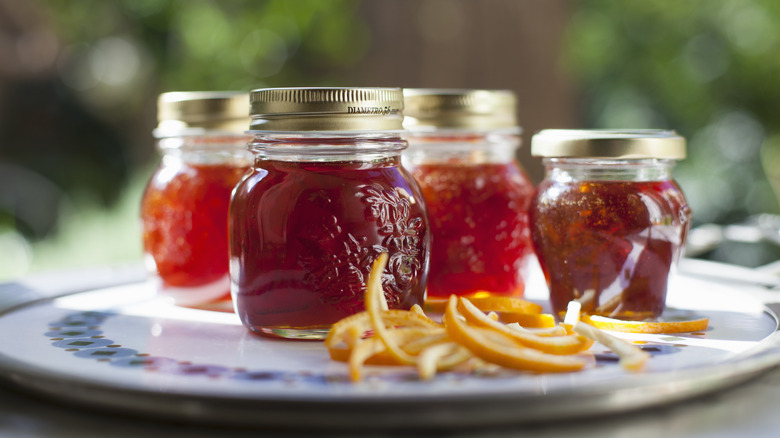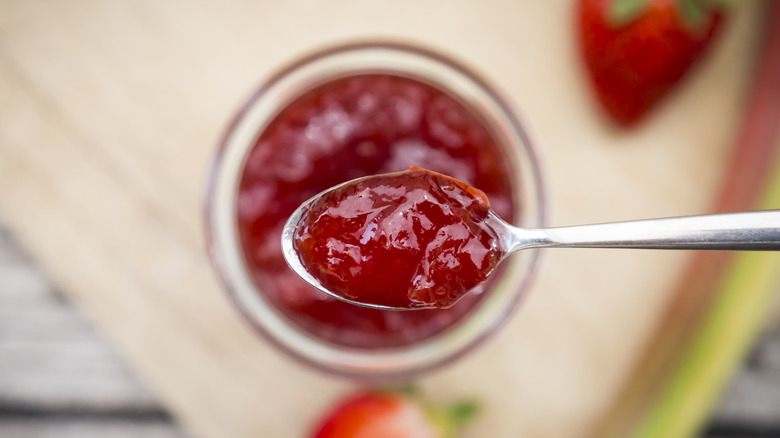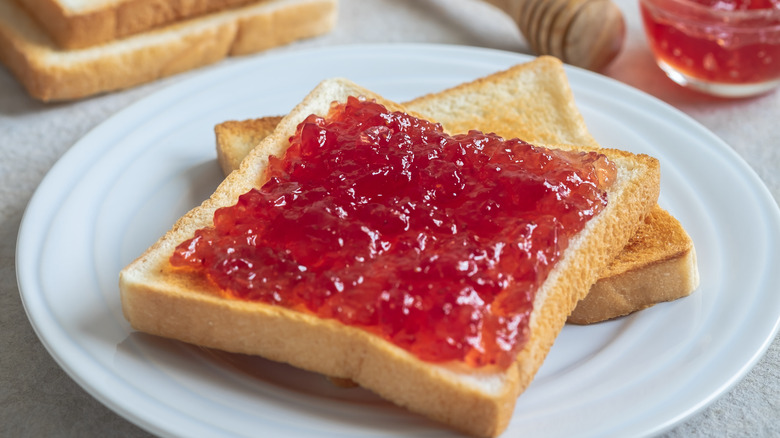Jam Vs Jelly: Here's The Difference Between The Two
You probably think you're well acquainted with jelly. You've carted PB&J sandwiches in your boxed lunches since grade school, after all. Maybe your parents customized yours with banana slices or marshmallow fluff, but the "J" always stood for jelly, right? Unless you were inadvertently carrying peanut butter and jam sandwiches in your cartoon lunchbox all this time.
Sure, they're both jewel-toned fruit products stored in clear jars and heaped on slices of bread at breakfast time, but jam and jelly are not the same. When it comes to the gooey, spreadable stuff stacked across the condiment aisle, there tends to be some confusion. While jam and jelly are somewhat interchangeable, there is actually a clear distinction between the two.
The difference between jam vs jelly ultimately lies in the preparation methods. Jelly is strained, resulting in a smoother, gel-like product. Meanwhile, the fruit chunks in jam are left behind, resulting in a chunkier texture.
Jam vs jelly
The popularization of peanut butter and jelly sandwiches might be the greatest thing since sliced bread. But what exactly are you pairing with your peanut butter and whole wheat? Jelly, by definition, tends to be clearer and is usually easier to spread than jam. Any large chunks of fruit are strained from jam, leaving behind just the juice. That liquid is then boiled, and is often mixed with sugar and gelatin, or pectin (a starch naturally found in fruits and vegetables) to thicken the juice's consistency. Jelly is substantially smoother than jam, making a spoonful of grape jelly ideal for quick, easy morning meal-prep.
Jam on the other hand, is made through a very similar process, but the final product boasts more traces of fruit or berries. Pieces of ripe fruit are chopped or pureed, then cooked with sugar. This results in more solid lumps, making jam perfect for coating flaky buttermilk biscuits or wedging between layers of fluffy cake.
Plus preserves
If canning is your jam, the autumn months are the best time to start preserving your farmers market favorites. When you're trying to store your beloved summer produce or stock your pantry with sweet, spreadable fruit products for the winter, there's another contender in the jam vs jelly debate to consider. The thickest of the set, is by far, preserves. Preserves feature more and larger fruit pieces dotting the spread. Of the bunch, more of the solid fruit is "preserved" in this method. When preserves are made from citrus, the result is considered marmalade. Marmalades often include the rinds, which are high in pectin and can lead to a firmer consistency.
Now you've studied up on your spreads, and know what sets apart jam vs jelly vs marmalade. You're ready to add another layer of flavor to your cakes, build the best sandwiches, or switch up your charcuterie boards with a little sweetness.


